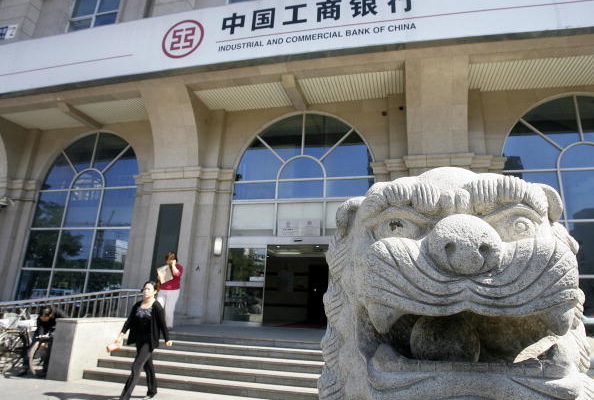China’s once thriving banking credit card business is currently facing an unprecedented “winter”. Data shows that in the first half of this year, the total outstanding credit card loans of 14 major banks evaporated by nearly 200 billion yuan. At the same time, the non-performing loan ratio continues to rise, and transaction volume has seen a significant drop across the board, reflecting deep-seated challenges of China’s economic slowdown and declining consumer purchasing power.
According to the latest bank financial reports, among the 14 major banks, only Agricultural Bank of China, Industrial and Commercial Bank of China, and Bank of Communications have seen an increase in their credit card loan balances compared to the beginning of the year, while the remaining 11 banks have experienced varying degrees of decline. China Construction Bank’s credit card loan balance plummeted by as much as 13.88%, and Ping An Bank also dropped by 9.23%, making a remarkable decline.
By the end of the first half of this year, the total outstanding credit card loans of these 14 banks decreased by nearly 200 billion yuan compared to the beginning of the year, a year-on-year decline of 2.56%. This figure marks the departure of the Chinese credit card market from its previous growth trajectory, entering a significant contraction period.
Even more alarming is the sharp decline in credit card transaction amounts across banks that have released data. China Merchants Bank saw an 8.54% year-on-year decrease in credit card transactions, while China CITIC Bank’s transaction volume dropped by 12.54%, Hua Xia Bank plunged by 16.32%, and Everbright Bank saw a nearly 30% decline, all reflecting a general weakness in the consumer market.
As the business scale shrinks, the risk indicators of credit card transactions are also deteriorating in sync. Industrial and Commercial Bank of China, China Construction Bank, and Agricultural Bank of China have all seen their credit card non-performing loan ratios rise by 0.25%, 0.13%, and 0.05%, respectively, compared to the beginning of the year.
According to the central bank’s data, the total amount of credit card overdue loans exceeding six months has risen from 98.135 billion yuan at the end of 2023 to 123.964 billion yuan by the end of 2024.
The increase in non-performing loan ratios directly reflects the decline in cardholders’ repayment capabilities, closely associated with the harsh reality of slowing income growth and increasing job pressures in the current economic environment.
The traditional credit card market is facing a “vote with their feet” from young consumers. Many post-90s office workers have expressed a preference for internet payment tools like Huabei, Douyin monthly payment, and Meituan monthly payment over credit cards. The “small and controllable” nature of these tools better suits the cautious consumer psychology of young people.
Facing the contraction of credit card business, banks are caught in a dilemma. On one hand, to control costs, banks are cutting back on credit card benefits; on the other hand, they still need to maintain or even increase card issuance targets.
Frontline bank employees have widely reported that obtaining a credit card has become exceptionally difficult, with many employees having to spend their own money to buy gifts to attract customers. In places like Beijing, extreme promotions like “apply for 12 credit cards and get a free bicycle” have even emerged.
At the same time, the allure of credit cards themselves is also decreasing. VIP lounge services being canceled, tighter redemption thresholds for points, and stricter conditions for annual fee waivers are common occurrences, further weakening the attractiveness of credit cards to consumers.
The comprehensive contraction of the credit card business fundamentally reflects a microcosm of the deep challenges facing the current Chinese economy. The trend towards cautious consumer spending, slowing income growth, and increased job uncertainty have collectively led to a significant decline in demand for consumer credit.
Peng Jiawen, Vice President and Chief Financial Officer of China Merchants Bank, admitted during a performance briefing that the decline in credit card transaction volume is closely related to the sluggish overall consumption market, indirectly acknowledging the weakness in economic recovery.
Data from the People’s Bank of China shows that in 2024, the total quantity of credit cards and unified credit and debit cards decreased by 5.14% year-on-year, and the per capita cardholding also saw its first decline in many years. This reversal of trend signifies that the Chinese consumer credit market has transitioned from an expansion period to a contraction period, heralding broader economic growth pressures.

